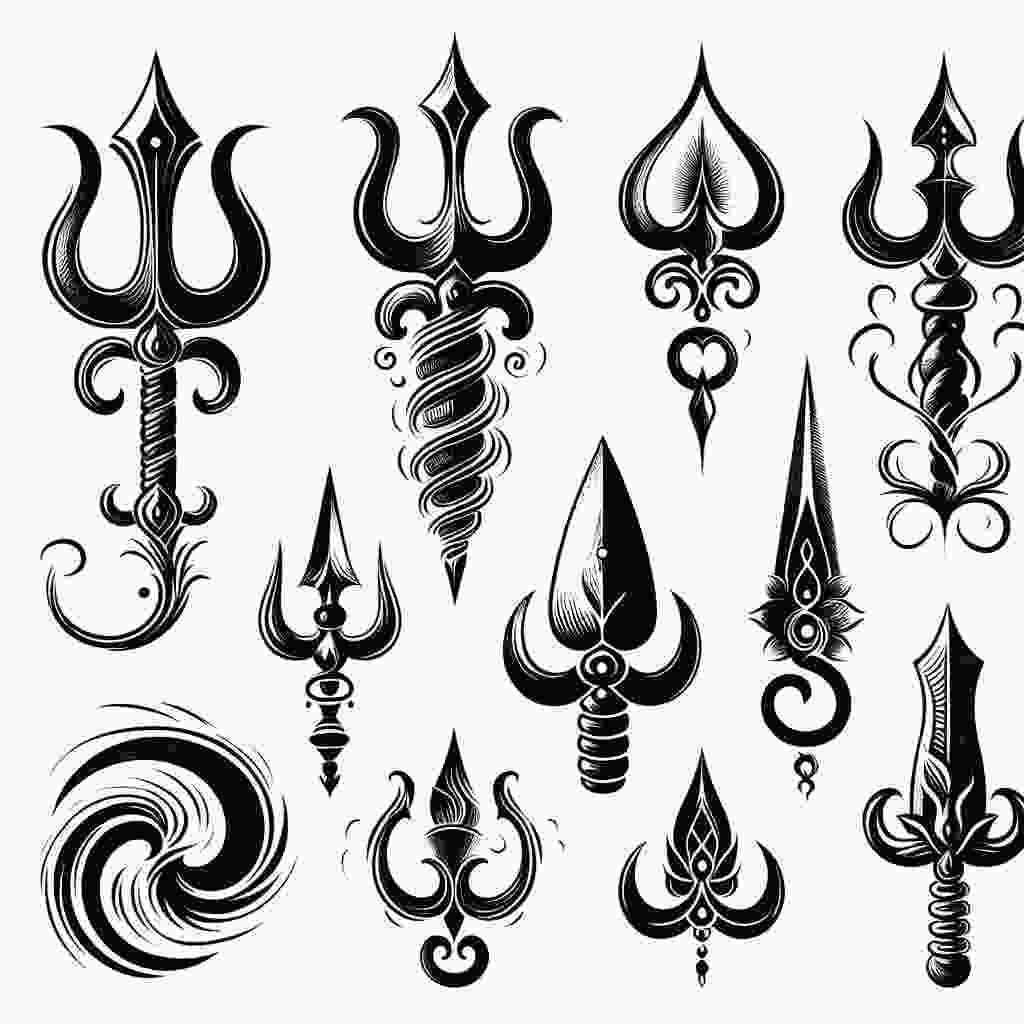The trishul tattoo is more than just an intricate design etched on the skin; it is a profound symbol deeply rooted in culture and spirituality. For many, this tattoo represents the divine power of Lord Shiva, a deity revered in Hinduism. The trishul, or trident, signifies the three fundamental aspects of life: creation, preservation, and destruction. Adorning oneself with this symbol can embody a personal connection to these elements and serve as a reminder of the balance required in life.
In recent years, the trishul tattoo has transcended its religious connotations, attracting individuals seeking to express strength, resilience, and their spiritual journey. It serves as a visual representation of one's beliefs and values, often reflecting a longing for protection and guidance. As tattoos continue to gain popularity across various cultures, the trishul stands out not just for its aesthetic appeal but for the deep significance it carries for those who choose to wear it.
Cultural Significance of Trishul Tattoo
The trishul, or trident, is an ancient symbol in Hindu culture, representing the power and authority of Lord Shiva. It embodies the principles of creation, protection, and destruction, reflecting the cyclical nature of existence. A trishul tattoo often signifies a deep spiritual connection and reverence for these forces, making it a popular choice among those who seek to align themselves with divine energies. Individuals sporting this tattoo often embrace its meaning as a reminder of their strength and resilience amid life's challenges.

In addition to its spiritual connotations, the trishul also holds cultural significance within various communities. It is frequently integrated into traditional art, architecture, and rituals, symbolizing divine protection against negativity and evil. The tattoo serves as a personal emblem of faith, cultural identity, and devotion, expressing a commitment to values represented by Lord Shiva and the trident. Those who wear it often feel a connection to their heritage and ancestors, celebrating the legacy of their culture through body art.
Moreover, the trishul tattoo has become a popular choice for individuals looking to express their individuality while embracing deeper meanings. Its striking design attracts attention, making it an attractive option for self-expression. As such, it resonates with those who appreciate the intersection of art and spirituality, allowing them to share their beliefs and values visually. Whether as a mark of faith, cultural pride, or personal empowerment, the trishul tattoo signifies a celebration of life and the complex layers of existence.
Symbolism and Meaning
The trishul, or trident, is a powerful symbol primarily associated with Hindu mythology, representing the divine force of Lord Shiva. Often depicted with three prongs, each prong embodies a unique aspect of existence: creation, preservation, and destruction. This tripartite nature signifies the cyclical process of life and the balance of these fundamental forces. Therefore, a trishul tattoo is not just a decorative element; it is a profound representation of understanding one's place in the universe.
In addition to its association with Shiva, the trishul also symbolizes the fight against negative energies and the triumph of good over evil. The tattoo serves as a talisman, providing protection to the wearer and serving as a reminder of inner strength and resilience. Each time one sees the tattoo, it can evoke a sense of empowerment and encourage the wearer to confront challenges with courage and determination.
Moreover, many individuals choose the trishul tattoo as a personal emblem of faith and spirituality. It can signify devotion to a higher power and a commitment to personal growth. The design allows for individuality in presentation, as it can be stylized in various ways, reflecting the wearer’s unique journey and beliefs. Thus, the trishul tattoo holds significant personal meaning for many who wear it, uniting spirituality, strength, and the cyclical nature of life.
Design Variations and Styles
The trishul tattoo can be designed in an array of styles, each reflecting unique cultural interpretations and personal significance. Traditional designs often feature intricate detailing, showcasing elaborate patterns around the trishul symbol itself. These tattoos may embody elements of nature or spiritual motifs, integrating lotus flowers or flames, which provide a vivid representation of divine protection and power.
Modern interpretations of the trishul tattoo lean towards minimalism, focusing on clean lines and geometric shapes. This contemporary style appeals to those who prefer a subtle yet impactful design. Color choices in these tattoos also vary widely, from classic black ink to vibrant colors that add a modern flair. These variations allow for personal expression while still honoring the traditional meanings associated with the trishul.
In addition to style and design, placement plays a crucial role in the significance of a trishul tattoo. Many individuals choose locations such as the forearm, back, or chest to showcase their tattoos prominently. Each placement can enhance the aesthetic appeal and carry different meanings, reflecting the wearer’s personal journey and connection to the symbol. Whether embracing tradition or exploring modern artistry, the trishul tattoo remains a powerful statement of identity and belief.
